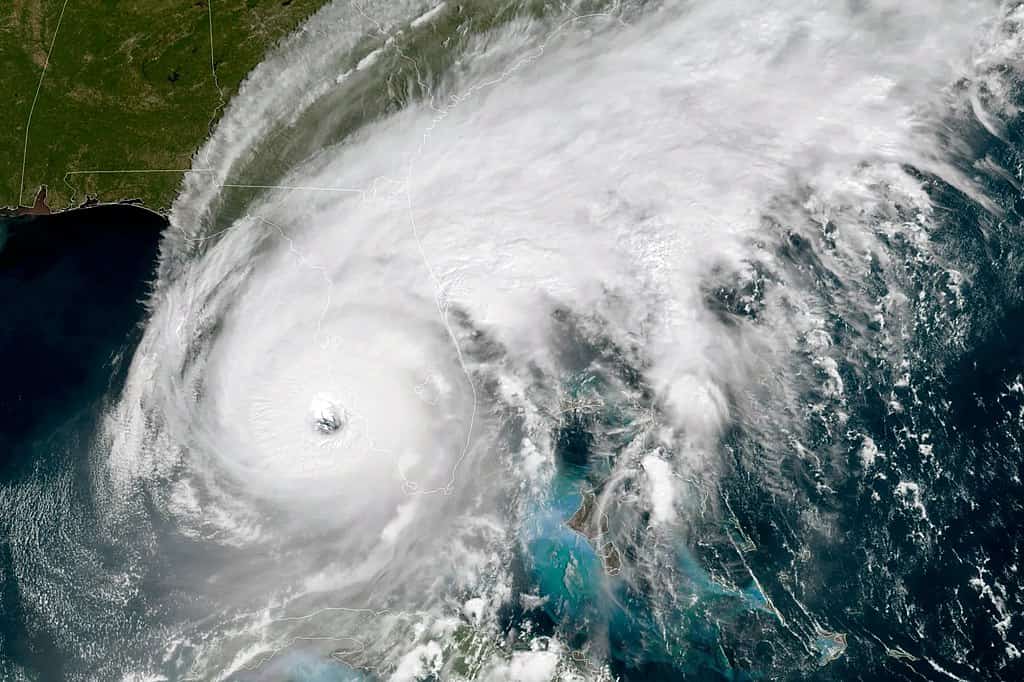In September 2022, Hurricane Ian struck Cuba, Florida, and the Carolinas. It was the third-costliest weather disaster on record, unleashing flooding and devastating winds. But that’s not all it did. A new study published in the journal mBio has revealed that the hurricane led to the proliferation of Vibrio bacteria, which can pose a significant risk to human health.

Vibrio bacteria are naturally present in the ocean and have a symbiotic relationship with various marine organisms like oysters and crustaceans. However, when the bacteria come into contact with humans they can cause diseases ranging from gastroenteritis to a fatal flesh-eating infection. The risk of infection increases with the consumption of raw or undercooked seafood or exposure of open wounds to seawater. Warm saltwater conditions, like those after hurricanes or floods, can elevate the chances of Vibrio exposure.
“We were very surprised to be able to detect—without any difficulty—the presence of these pathogens,” said the study’s senior author Rita Colwell, a Distinguished University Professor in the University of Maryland Institute for Advanced Computer Studies who has studied Vibrio for the last 50 years.
Although the CDC had warned about the presence of flesh-eating bacteria in post-hurricane floodwaters, this study reveals that the bacteria can thrive even after the waters recede.
The study — conducted by researchers from the University of Maryland, University of Florida, and microbiome company EzBiome — combined genome sequencing, satellite data, and environmental information to identify the presence of pathogenic Vibrio species. Researchers collected and analyzed water and oyster samples collected in October 2022. According to the Florida Department of Health, Lee County, which had the highest caseload in the state, reported 38 infections and 11 deaths linked to vibriosis.
What makes these findings particularly concerning is the detection of two specific Vibrio species, Vibrio parahaemolyticus and Vibrio vulnificus. V. parahaemolyticus can lead to gastroenteritis and wound infections. V. vulnificus is even more menacing, causing the flesh-eating infection necrotizing fasciitis, which is fatal in approximately one in five cases.
The Threat of Vibrio Bacteria
Environmental conditions following Hurricane Ian created a perfect storm for the growth of Vibrio bacteria. Increased rainfall, changes in sea surface temperature, and variations in chlorophyll concentrations in the ocean, which indicate the presence of phytoplankton and zooplankton, all contributed to an environment conducive to Vibrio proliferation. Plankton blooms, in particular, were associated with high Vibrio bacteria abundance.
The threat of Vibriosis extends beyond just the warmer regions. In August 2023, three individuals in New York and Connecticut succumbed to V. vulnificus infections. The researchers had predicted this uptick, based on climate trends in the Northeast US. As ocean temperatures rise, areas like the Chesapeake Bay could also be impacted.
These findings underscore the complex relationship between climate change and the proliferation of Vibrio bacteria. As global warming drives ocean temperatures up, we can anticipate more frequent and intense storms, similar to Hurricane Ian. This, in turn, creates conditions in which Vibrio bacteria thrive, making coastal communities more susceptible to Vibrio infections in the future.
“These Vibrios generally grow well between 15 and 40 degrees Celsius (59-104 degrees Fahrenheit), so as the temperature warms, their generation time shortens and they divide faster and faster,” Colwell said. “The warming of seawater—which mixes with freshwater, creating optimal salinities—really enhances the growth of Vibrios, so it’s a very serious concern.”
The importance of this research extends beyond the immediate health implications. The study’s use of genetic analysis, environmental data, and remote sensing demonstrates the potential to proactively detect and characterize Vibrio pathogens, which can be a game-changer in public health management. It also highlights the need for further investigation to quantify the prevalence of Vibrio bacteria in different locations, seasons, and environmental conditions.
“On the positive side, knowing that these infections are associated with the increased variability of a changing climate, perhaps now is the time to develop mechanisms to understand and mitigate it,” Colwell said. “Climate change and flooding are clearly linked to infectious disease, and we need to take it seriously.”






